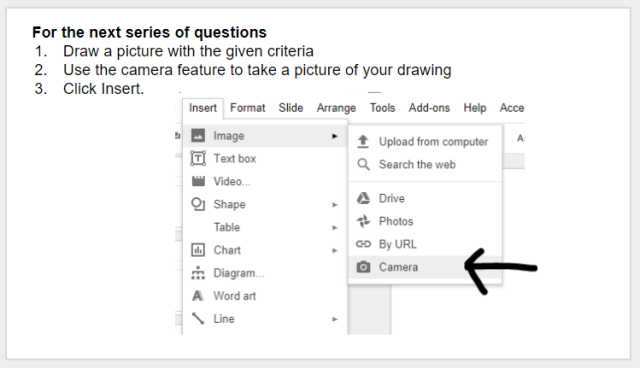Inspiration
Toward the end of the school year, my colleague Jorge and I, had a regular gig co-teaching in Mrs. S’s 4th grade class. Jorge had been working with Mrs. S throughout the year on various projects. I joined the duo during the last quarter to show Mrs S how to integrate Desmos into her math lessons.
On the day in question, I was scheduled to lead a 1 hour lesson using the Polygraph: Quadrilateral Attributes. I was prepared and ready to go when Jorge’s text came through reminding me that I was scheduled for 2 hours. What? Wait… How did I miss that detail? Dang! I needed to restructure – and fast.
Necessity is the Mother of Invention
The text scrolled across my phone minutes before leaving my office. I had the 3 mile drive to conceive plan B. For a couple years, I’ve demoed or co-taught various Polygraph lessons and then, during the debrief, shared ways to build off the experience – Never getting the chance to run with any of my suggestions. This day was different. On this day, I was granted time to extend the Polygraph lesson.
Once in the classroom, I assisted with the transition to math. Students turned on their computers, logged into Google Classroom and clicked the Desmos link. Polygraphs aren’t new to this group of students. Their first experience was playing Polygraph: Geometry Basics. When all students had logged in and the activity norms were recapped, students were free to play and plan their questioning strategy.
Now that students were focused on guessing their partner’s selection, I sat down to create the post Polygraph task. The task linked below is a cleaned up version. Time was limited and the original version valued substance over aesthetics. Yes, the students were familiar with this type of activity, but circulating the room, listening to conversations and interacting with students is crucial to the activity’s effectiveness. My charge was to whip up the task and get back to the students ASAP.
The Task
My district jumped onto the Google Classroom train this year and I’m thankful for the flexibility it brings. Once in drive, I created a new Google slide presentation, copied the pictures from the Polygraph activity and started writing questions. One question per slide. The task was placed into Google Classroom using the create assignment feature and the option, Make a copy for each student.

Title Slide
The main purpose of a Desmos Polygraph is for students to experience and understand the need for academic vocabulary. When used at the beginning of a unit, student questions are often constructed with informal language. As the playing continues, the teacher plays a key role in helping students infuse academic vocabulary into their questions. Click here to read a post outlining one method of integrating academic vocabulary as students are playing a Desmos Polygraph. Many teachers use the same Polygraph activity at the end of a unit with the expectation that academic language is used in every question.
For this lesson, the Polygraph activity focused on math symbols. Students based their questions on the various symbols displayed in the given images. For the post activity, student needed to work with the vocabulary and symbols differently. The post activity required students to explain the meaning of each symbols as well as physically create quadrilaterals based on the given criteria.

The camera feature built into Google Slides is wonderful. Students really like taking pictures of their work. More information on how to use the camera feature can be found in this blog post.


Resources
Desmos has 2 quadrilateral based polygraphs, linked below. I created a third one after speaking with a handful of elementary teachers and coaches in different parts of the country. I asked them which geometry concepts their students struggle with the most. Their common response: Quadrilateral Attributes. With their response in mind, I built a polygraph that focused on the symbols used to differentiate the various quadrilaterals. Once students are confident with their understanding of the symbols, I suggest upping the ante by moving onto one of the Desmos Polygraphs.
The Desmos Polygraphs:
Other links found in this post:
- Polygraph: Geometry Basics
- Google Slides – Camera Feature
- Building Academic Language w/ a Desmos Box & Whisker Polygraph

My colleague Jorge and me